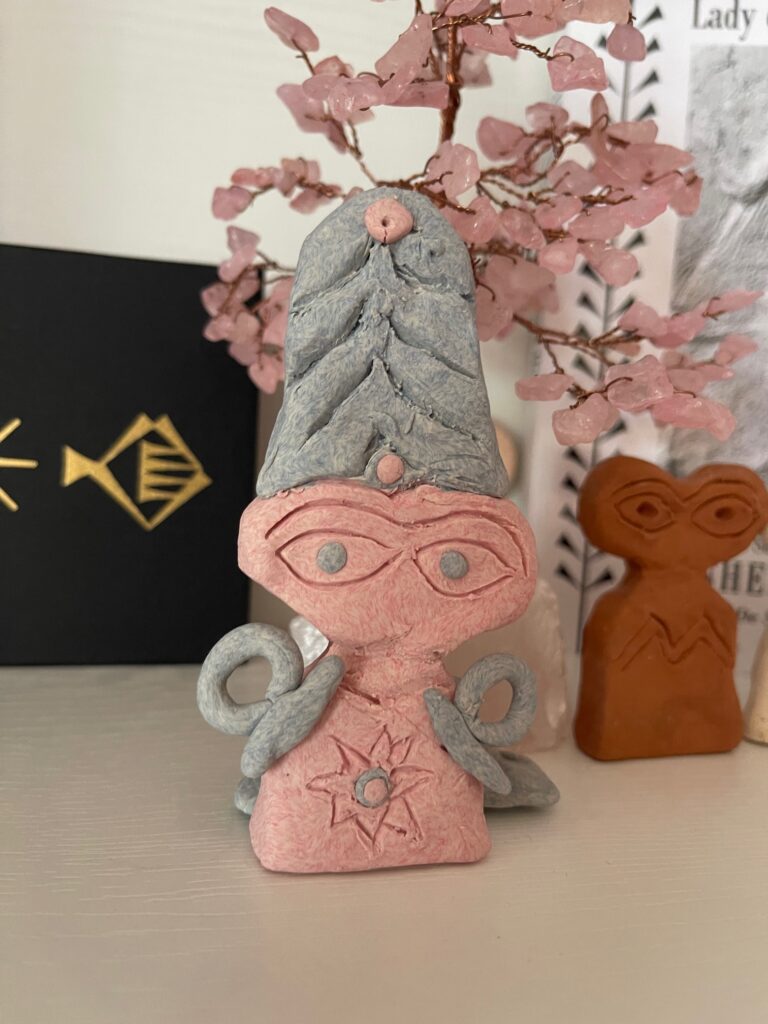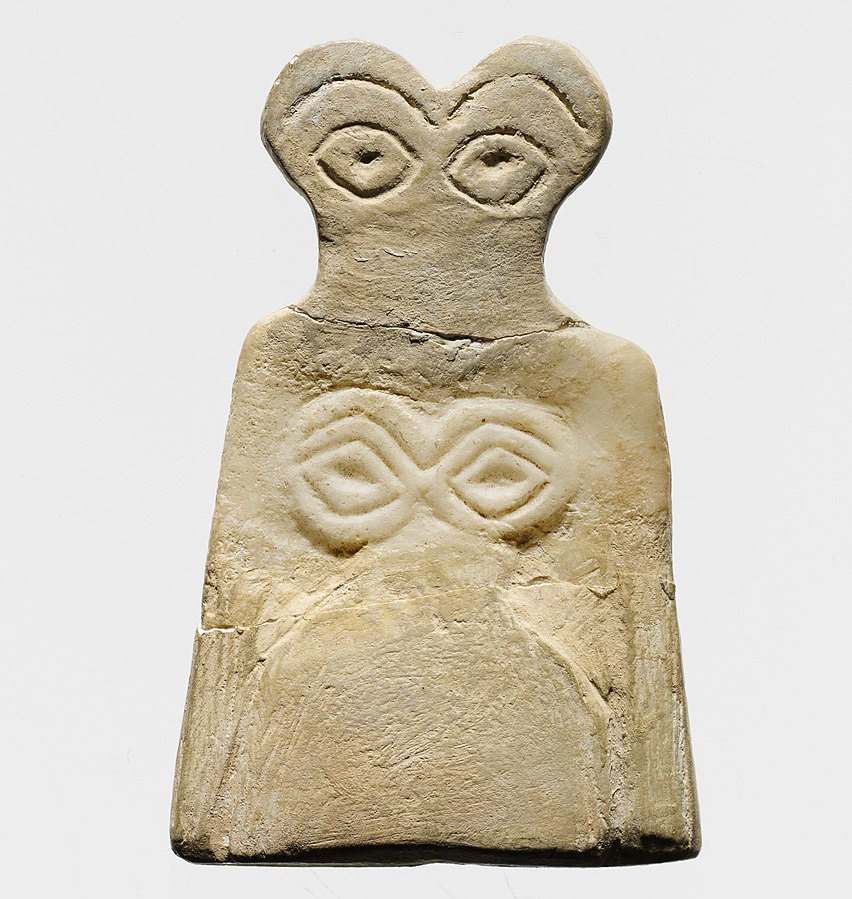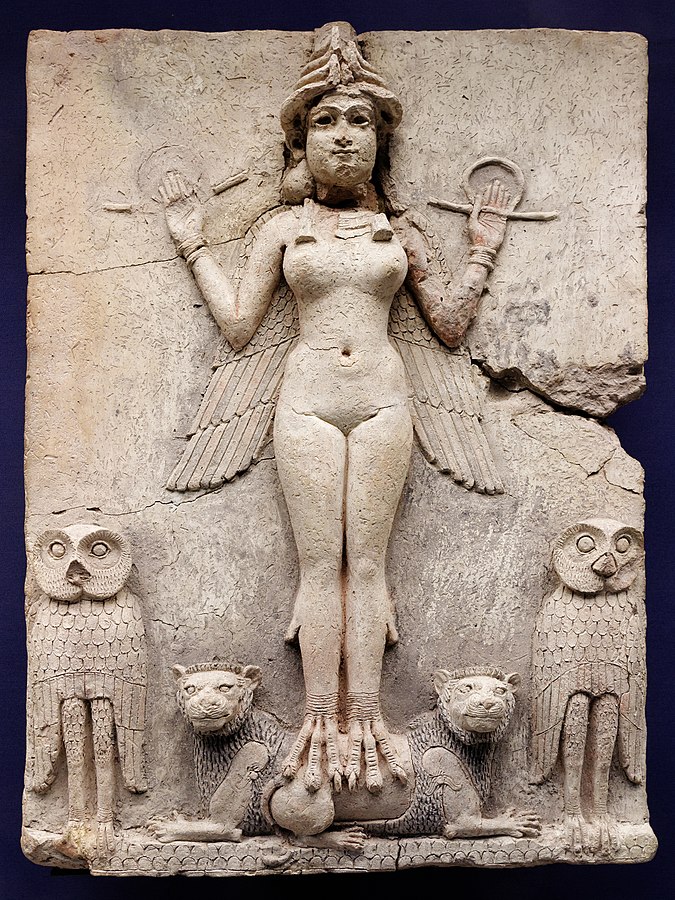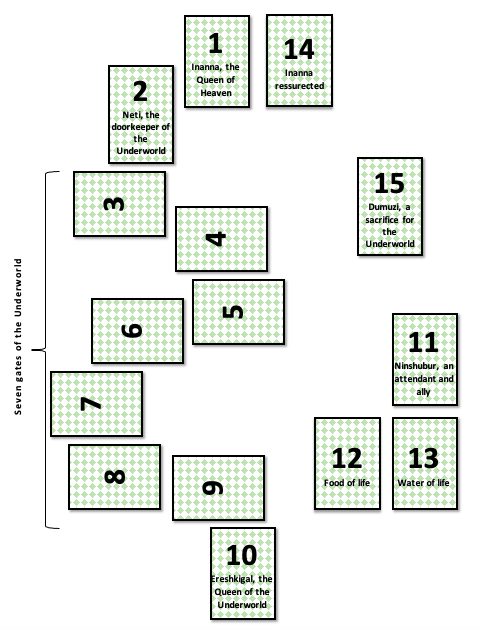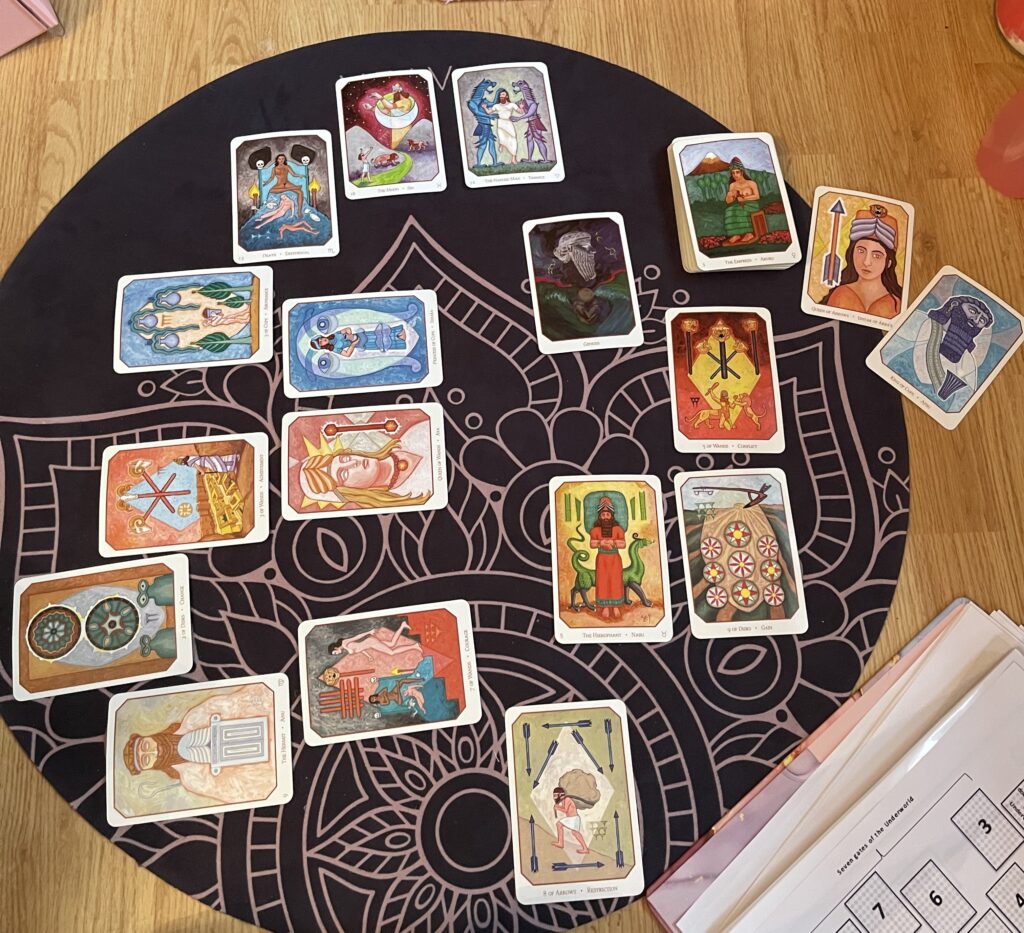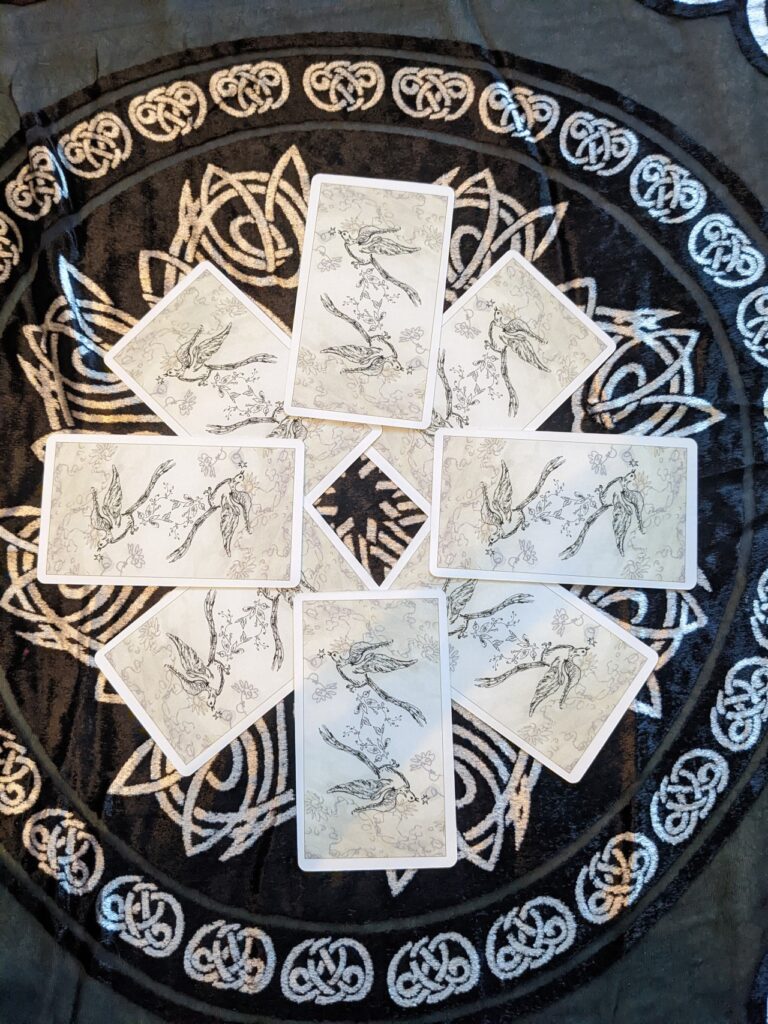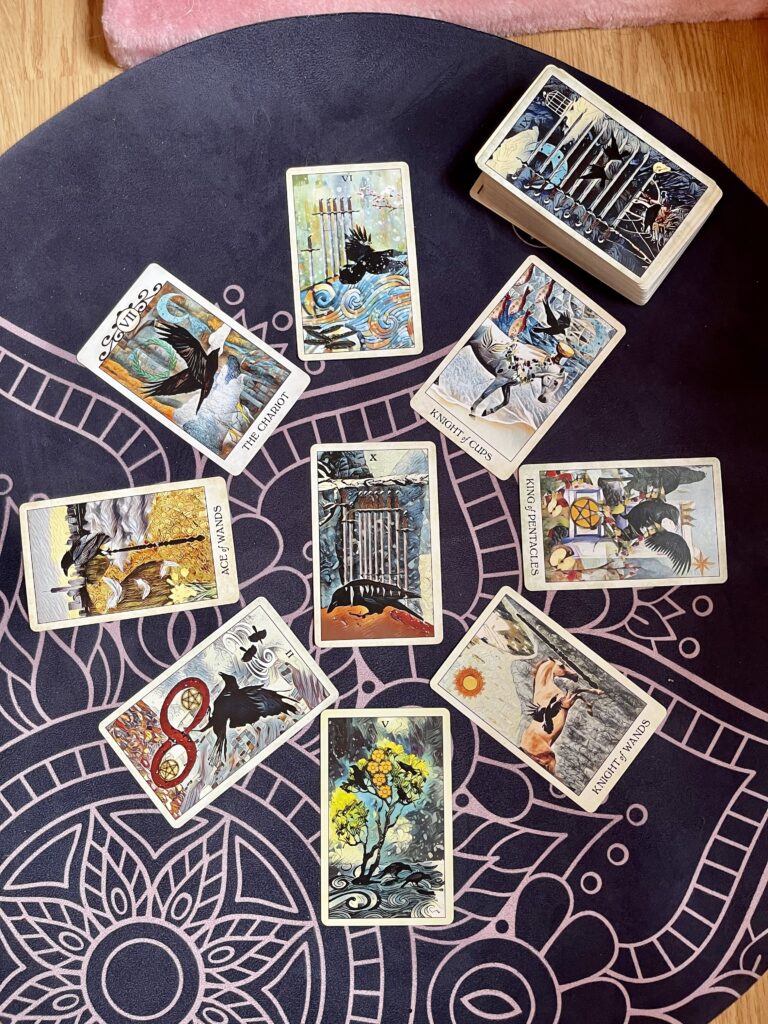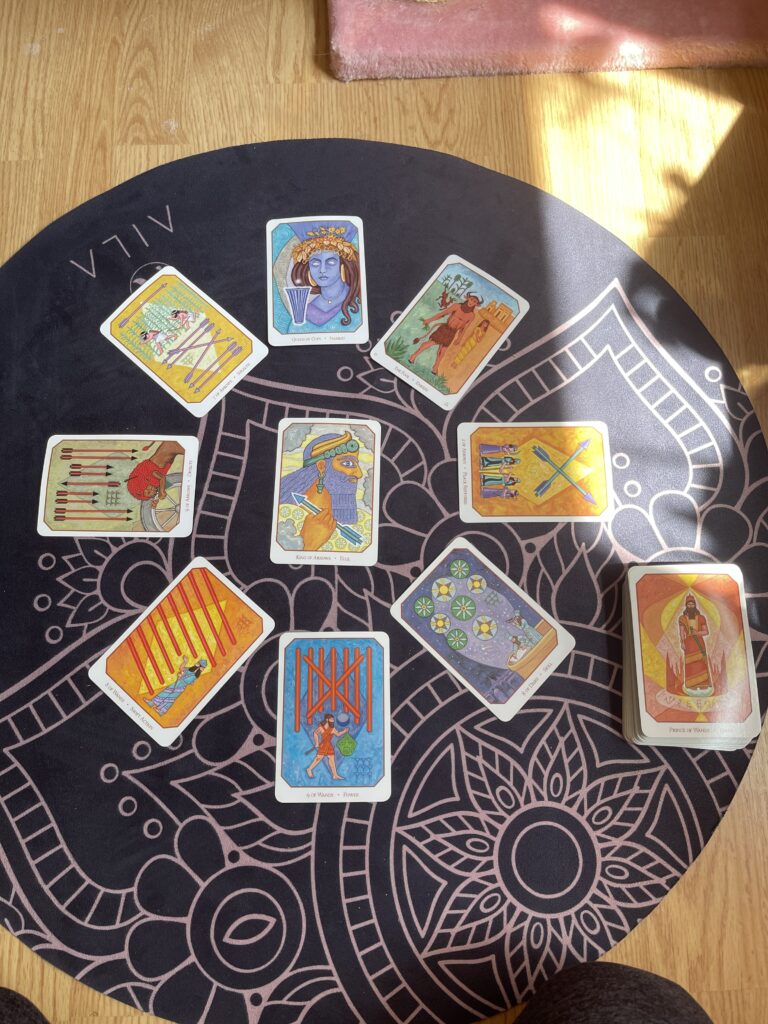I wanted to represent Dumuzi and Ninshubur on my altar, but I was having trouble finding statues of either of these deities to purchase. I ended up just making my own, based on ancient artifacts that were found in Sumerian ruins. I know my sculpture skills are exactly on par with those of actual artists, but I hope the gods appreciate them none the less. I presented them to Dumuzi and Ninshubur at the Temple of Inanna and Dumuzi’s monthly devotional this month, along with food offerings and roses for Inanna (all handmade by me or harvested from my garden). I like to think that the gods appreciate everything we make for them with love. I mean, I enjoy it when kids give me a picture they drew, saying that it’s supposed to be me. Maybe it’s the same kind of thing?
Votive Figurine for Dumuzi
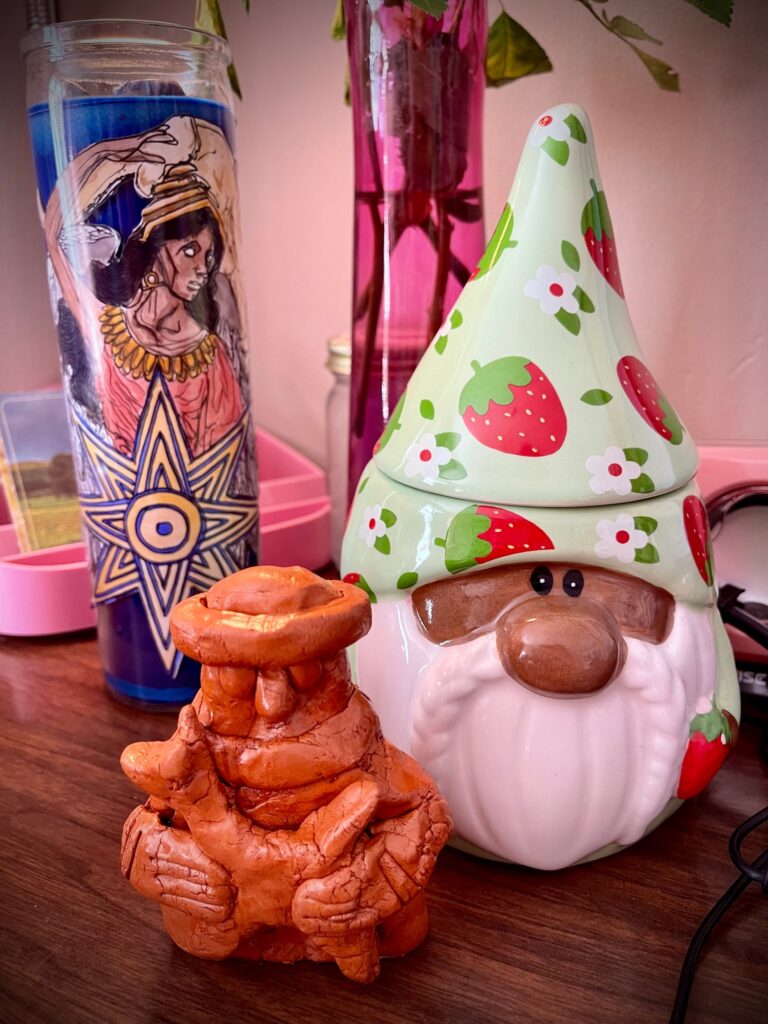
I based my votive figurine for Dumuzi on a statue of a shepherd that was found in the modern-day site of Tell Telloh in Iraq, what was once the ancient Sumerian city Girsu. I came across the original artifact while searching for statues of Dumuzi. There are some recovered ancient statues that are more certainly meant to represent Dumuzi, but I used one that is only identified as a shepherd for my inspiration. It is a simpler design that I could more closely replicate myself, and it just looked whimsical to me. The design made me happy to look at, and I wanted to capture that joy in my offering to Dumuzi. I just really like that particular artifact, I can’t completely explain why.
This particular artifact was labeled as being a representation of Dumuzi on Bing image search, via some sketchy website (as soon as I saw references to Sitchen, I left and tracked down the original source for the image). I traced it back to the Louvre, where the artifact is currently housed, and found out that it is thought to represent a shepherd holding a baby goat or sheep.
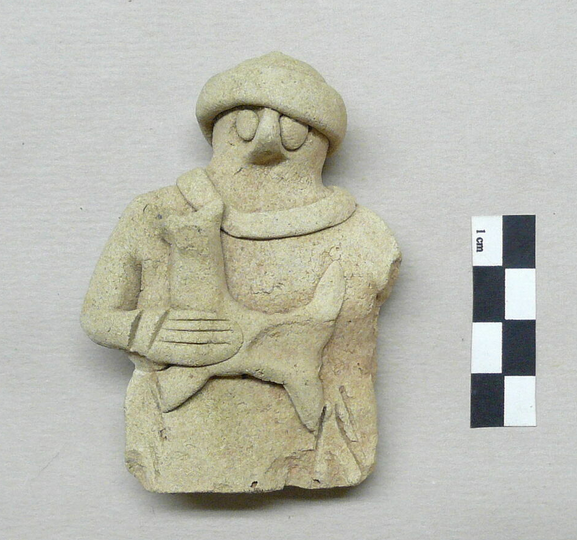
The original artifact is missing an arm, but I made both arms for him. I also embedded a goat bone (I think it’s probably a spine bone) into his back. I got the bone in a goat curry meal from a local Jamaican restaurant like a year ago. I didn’t know what I was going to use it for at the time, but it looked super cool, so I cleaned it up, removed all the soft tissue that remained, and kept it packed in a cup of diatomaceous earth until I thought of a use for it. Since Dumuzi is a shepherd god, I thought it would be a nice offering to him.
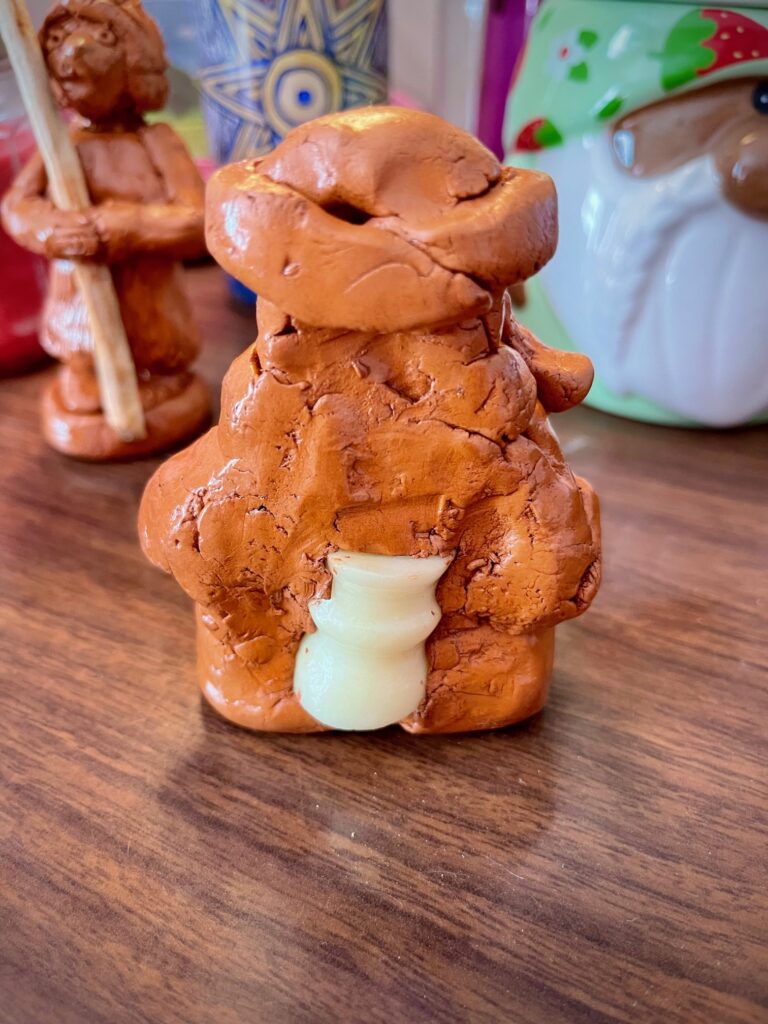
I used the same air-dry clay that I used to make my cuneiform flashcards. Both figurines looked a bit crumbly when they dried, but I kinda like how it makes them look more ancient and old-timey, so I didn’t try to fix it before glazing them.
Votive Figurine for Ninshubur
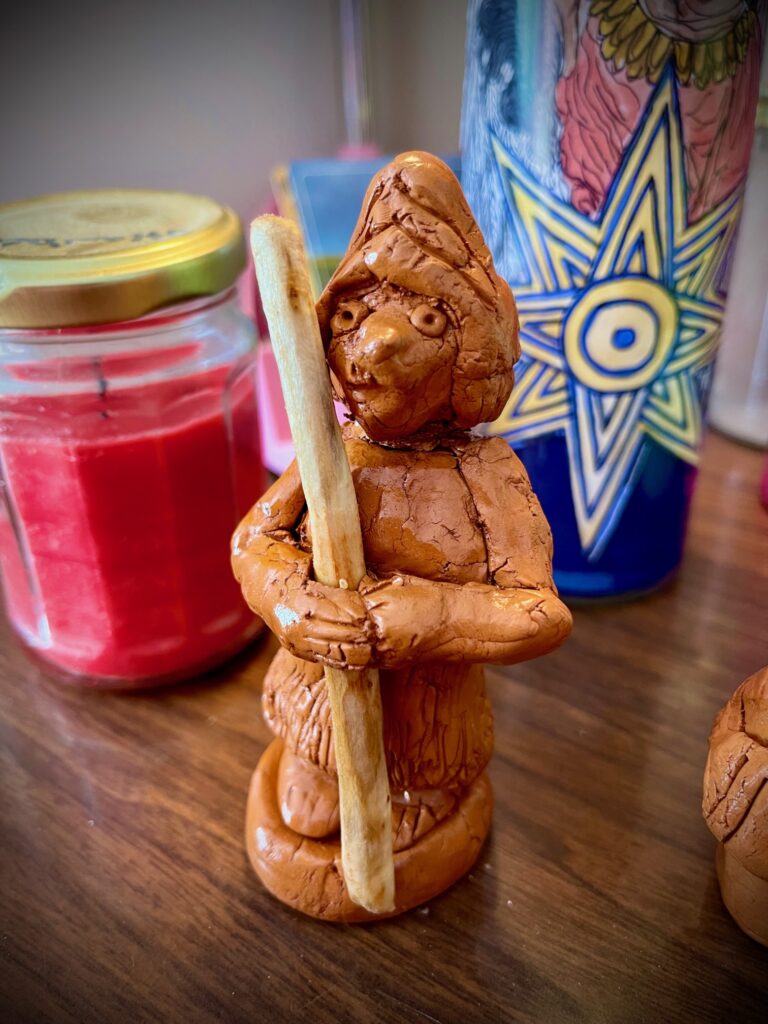
I used the same basic process to make my votive statue for Ninshubur. Her figurine is based on two ancient artifacts depicting her, though both original statues are missing their heads, so I had to make up that entire part. The head didn’t want to stay attached, so I used wooden rods inside to hold the whole thing together.
The first original artifact I used as inspiration is a statue from the Sumerian city-state of Der, the modern-day site of Tell Aqar in Iraq. This one is currently housed at the British Museum.
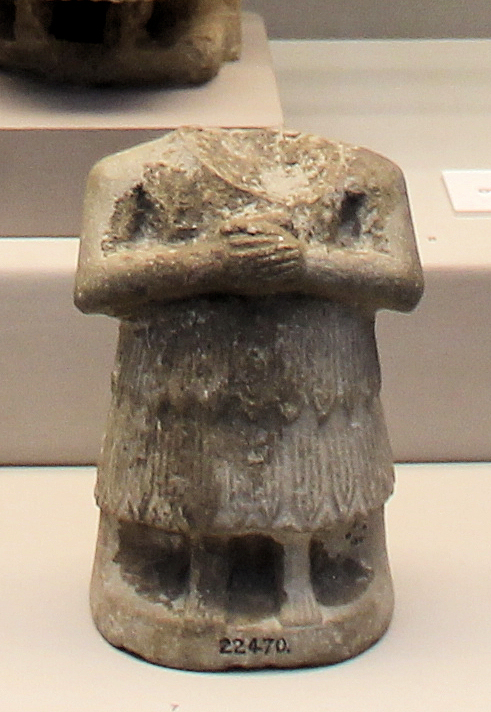
The other statue I was inspired by was found in the Sumerian city Adab, modern day Bismaya, Iraq. It is currently on display in the Sumerian Gallery of the Iraq Museum in Baghdad. Like the statue from Der, this one is also missing her head.
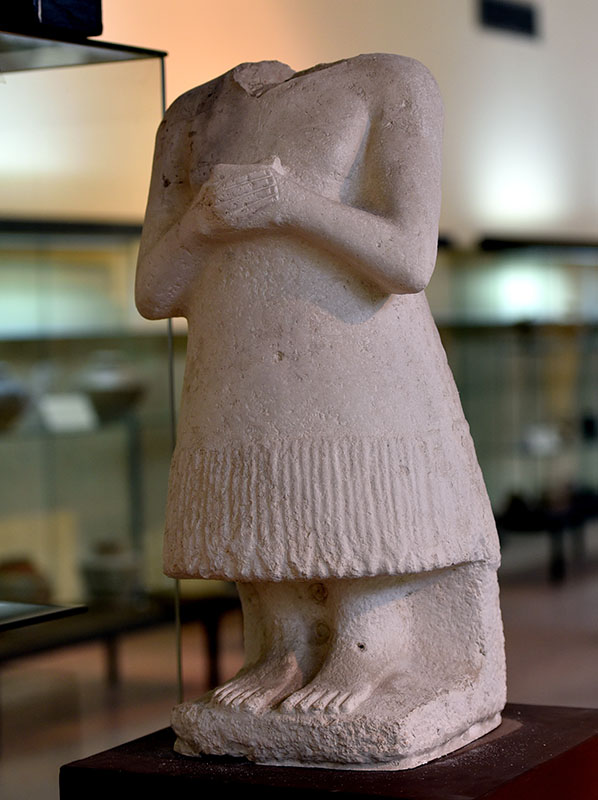
For my figurine, I made a head featuring a horned crown, as seen on many ancient depictions of deities. I tried to make her features a bit androgynous since there is some confusion over Ninshubur’s gender in the various ancient texts. She is depicted as female in the texts related to Inanna, but I kind of feel like she has a more non-binary androgynous energy about her.
I also added a staff in her hands because the staff is her symbol as Inanna’s sukkal. I kept her posed with her hands clasped, like in the original statues, but I put the staff in her hands. The staff is made from a willow branch. Willow is one of the types of trees that the Huluppu tree from the myth is theorized to have been, though it could have also been a date palm. There are probably other theories out there too. Anyway, I only had a willow branch dried and ready to be used, so that’s what I went with. Willow is my favorite type of tree anyway.
I was planning on inscribing both deities’ names in cuneiform directly onto the figurines, but I kept squishing them too much in the process (I’m already clumsy, and I think my hands aren’t working as well as they were since having chemo). I made separate little name plaques for them instead.
I might make one for Inanna some time too. I already have a few representations for her, but maybe she’d like a homemade one too (other than the eye-idol one I made for her a few months ago). I might make them for Geshtinanna and Ereshkigal eventually too. I just need to do more research on their iconography and existing known representations of them.
